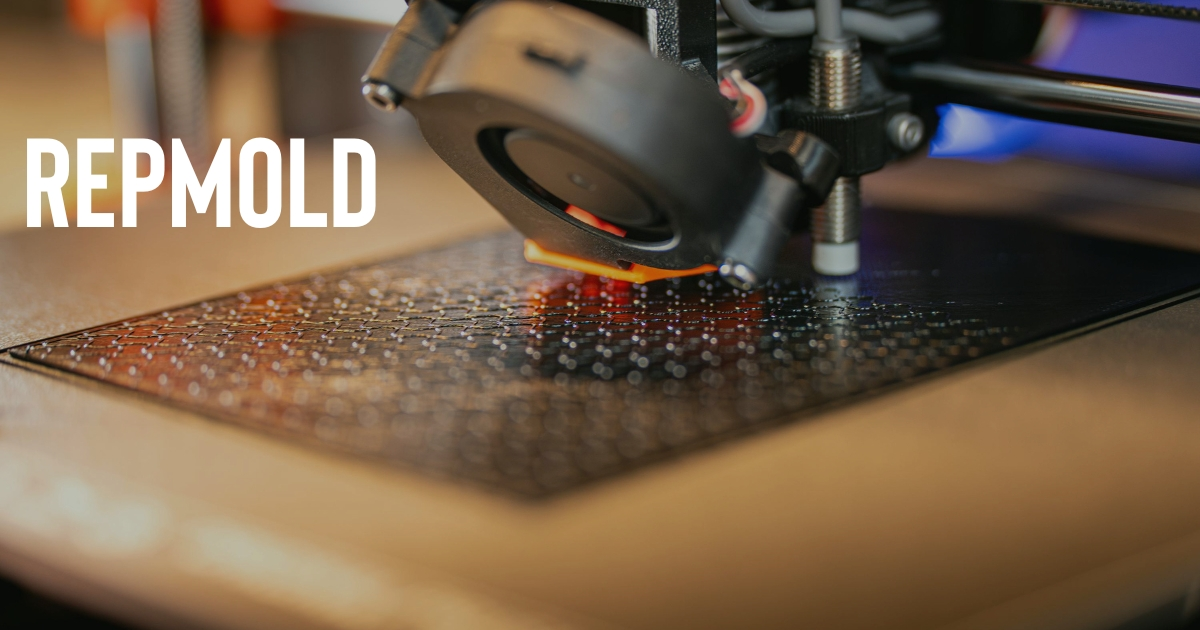Why Repmold Is Revolutionizing Precision Manufacturing

Repmold is a modern manufacturing technique that creates exact copies of a master mold or model. It uses advanced materials, automation, and digital design tools to produce highly precise and consistent replicas. This method saves time, reduces errors, and improves efficiency compared to traditional molding processes.
Repmold ensures flawless replication and efficiency, making precision manufacturing faster, smarter, and more reliable.
Understanding Repmold
Definition and Key Features
Repmold is a precision manufacturing method that produces exact copies of a master mold or model. Its key features include high accuracy, consistent output, fast production, and reduced material waste. By combining digital design, automation, and advanced materials, it ensures reliable results for every batch.
How It Differs from Traditional Molding Techniques
Unlike traditional molding, which often requires expensive tooling and long setup times, Repmold streamlines the process. It captures the original shape digitally, automates replication, and maintains near-perfect consistency. This makes Repmold faster, more cost-effective, and highly scalable for modern manufacturing needs.
The Origin and Evolution of Repmold
Early Molding Techniques in History
Molding has been used for thousands of years to create tools, pottery, and decorative items. Early techniques relied on simple materials like clay, stone, or wood and manual shaping, which often led to inconsistent results.
Industrial Revolution and Modern Metal Molds
During the Industrial Revolution, metal molds became common, allowing faster production and better durability. Factories could produce more uniform products, but setup costs were high, and precision still varied.
How Repmold Emerged as a Symbol of Repeatable Precision
Repmold evolved to address these limitations. By combining digital design, automation, and advanced materials, it ensures exact replication every time. Today, Repmold represents reliable, repeatable precision in modern manufacturing, setting a new standard for quality and efficiency.
Also Read: How Technology is Transforming Vending Machines: The Sweet Robo Revolution
How Repmold Works
Basic Process: Design, Prototype, Testing, and Final Mold
The Repmold process starts with creating a digital or physical design of the product. Next, a prototype is made to test fit, form, and function. After adjustments, the final mold is produced using precise materials and advanced techniques. This step-by-step workflow ensures high-quality, reliable replicas.
Role of CAD Software and Digital Tools in Achieving Accuracy
CAD software and digital tools are essential in Repmold. They allow designers to create detailed models, simulate production, and detect errors early. Digital precision ensures that each mold matches the original design exactly, reducing mistakes and material waste.
Ensuring Identical Output in Mass Production
Repmold uses automation and strict quality control to maintain consistency. Every mold and product is replicated precisely, making mass production efficient, scalable, and predictable. This reliability is why Repmold is preferred for industries demanding exact duplicates and high-quality standards.
Also Read: How To Choose The Right Radiology Tech School For You
Materials Used in Repmold Production
Common Materials: Steel, Aluminum, and Copper Alloys
Repmold commonly uses steel, aluminum, and copper alloys. Steel provides strength and durability, aluminum is lightweight and easy to work with, and copper alloys offer excellent thermal conductivity. The choice depends on the product’s requirements and production volume.
Specialized Coatings for Durability and Temperature Resistance
Many molds receive special coatings to enhance wear resistance, corrosion protection, and heat tolerance. These coatings extend mold lifespan and ensure consistent performance under high-temperature or heavy-use conditions.
How Material Choice Affects Cost, Performance, and Lifespan
Material selection impacts cost, durability, and production efficiency. High-quality metals may cost more upfront but reduce maintenance and replacement costs over time. Choosing the right material balances budget, performance, and long-term reliability.
Environmental Considerations in Material Sourcing
Sustainable sourcing of metals is important. Repmold encourages using recycled materials and eco-friendly suppliers to minimize environmental impact. Responsible sourcing reduces carbon footprint and supports sustainable manufacturing practices.
Industrial Applications of Repmold
Automotive Manufacturing
Repmold is widely used in automotive production for creating precise parts like engine components, chassis elements, and interior fittings. Its high accuracy and consistency ensure that every part meets strict safety and performance standards.
Electronics Production
In electronics, Repmold helps produce housings, connectors, and intricate circuit components. The method guarantees exact replication of small, detailed parts, which is crucial for reliability and functionality in devices.
Consumer Goods
Repmold is ideal for consumer products such as appliances, tools, and household items. It allows manufacturers to produce uniform, high-quality items quickly, reducing waste and maintaining cost efficiency.
Aerospace and Defense
In aerospace and defense, precision is critical. Repmold creates complex components with tight tolerances, supporting safety, performance, and regulatory compliance in aircraft, spacecraft, and defense equipment.
Key Benefits of Using Repmold
High Accuracy and Consistent Output
Repmold delivers precise, identical replicas every time. This consistency reduces errors, ensures reliability, and meets strict quality standards across all production batches.
Faster Turnaround and Scalability
The process is fast and scalable, allowing manufacturers to produce large volumes quickly. Prototypes, small runs, or mass production can be completed without compromising quality.
Cost-Effective for Large-Scale Production
Repmold minimizes setup times and reduces material waste, making it more economical for high-volume manufacturing. Lower errors and faster production lead to significant cost savings.
Enhanced Product Quality and Uniformity
By maintaining tight tolerances and precise replication, Repmold ensures high-quality, uniform products. Each item matches the original design perfectly, enhancing overall product reliability and customer satisfaction.
Reduced Waste and Better Material Efficiency
Repmold uses materials efficiently, cutting down on scrap and defects. Optimized use of metals and coatings ensures sustainable production and minimizes environmental impact while saving costs.
Technological Advancements in Repmold
AI and Machine Learning for Mold Optimization
Repmold now uses AI and machine learning to analyze production data and optimize mold designs. These technologies improve precision, reduce errors, and predict potential issues before they occur.
3D Printing and Rapid Prototyping for Design
3D printing and rapid prototyping allow manufacturers to quickly test and refine molds. This speeds up the design process, reduces costs, and ensures the final mold meets exact specifications.
Smart Sensors and IoT for Predictive Maintenance
IoT-enabled sensors monitor mold performance in real time. They detect wear, temperature changes, and potential failures, allowing predictive maintenance. This approach extends mold life, minimizes downtime, and improves efficiency.
Challenges in Implementing Repmold
High Initial Investment in Machines and Training
Implementing Repmold requires advanced machinery, skilled operators, and proper training, which can be costly for small manufacturers. However, this investment pays off over time through greater efficiency and precision.
Mold Wear and Material Degradation Over Time
Even with durable materials, continuous production causes wear and degradation in molds. Regular maintenance and timely replacements are essential to maintain quality and consistency in the manufacturing process.
Balancing Costs with Long-Term Efficiency
While Repmold improves production speed and quality, balancing upfront costs with long-term gains can be challenging. Smart budgeting, gradual adoption, and use of sustainable materials help achieve better cost-to-efficiency ratios over time.
Economic and Industrial Impact of Repmold
Contribution to Global Manufacturing Competitiveness
Repmold enhances precision and efficiency, helping manufacturers compete globally. Companies using Repmold can deliver high-quality products faster, giving them a strong advantage in international markets.
Job Creation and Skill Development in Mold Engineering
The adoption of Repmold drives demand for skilled engineers and technicians. Workers gain expertise in advanced manufacturing, CAD design, and automation, boosting careers and industry talent.
Driving Innovation and Industrial Growth
Repmold encourages continuous innovation by enabling faster prototyping, better material use, and precise replication. This fuels industrial growth, improves productivity, and supports the development of new technologies and products.
The Future of Repmold
Trends in Next-Generation Molding Technology
The future of Repmold includes advanced automation, smart materials, and digital integration. Emerging techniques aim to make molds faster, more precise, and easier to customize for diverse manufacturing needs.
AI-Driven Automated Production Lines
AI is transforming Repmold by enabling fully automated production lines. Machines can monitor performance, adjust processes, and predict maintenance, ensuring consistent quality and reducing downtime.
Expansion into Sustainable and Renewable Industries
Repmold is increasingly applied in green manufacturing and renewable energy sectors. By using eco-friendly materials and efficient production methods, it supports sustainable growth while maintaining precision and scalability.
FAQs About Repmold
What is Repmold and How Does It Work?
Repmold is a precision manufacturing method that creates exact copies of a master mold or model. It uses digital design, automation, and advanced materials to ensure every replica is accurate and consistent.
Which Industries Benefit Most from Repmold?
Repmold is ideal for automotive, electronics, consumer goods, aerospace, and defense industries. Any sector that requires high precision, uniformity, and scalable production can benefit.
Are There Special Materials or Tools Required?
Yes. Repmold typically uses steel, aluminum, and copper alloys, often with specialized coatings. CAD software, digital tools, and automated machinery are essential for accurate design and replication.
How Does It Compare with Traditional Molding Methods?
Unlike traditional molding, which can be slow and inconsistent, Repmold provides faster setup, high accuracy, reduced waste, and repeatable results. It is more efficient and cost-effective for modern manufacturing needs.
Conclusion
Repmold delivers high accuracy, consistent output, faster production, and cost efficiency. It reduces material waste, enhances product quality, and supports scalable manufacturing, making it essential for modern precision industries.
Take action now to experience the benefits of Repmold. Explore its tools, adopt the method in your production line, or learn more to boost efficiency, precision, and product quality immediately.

